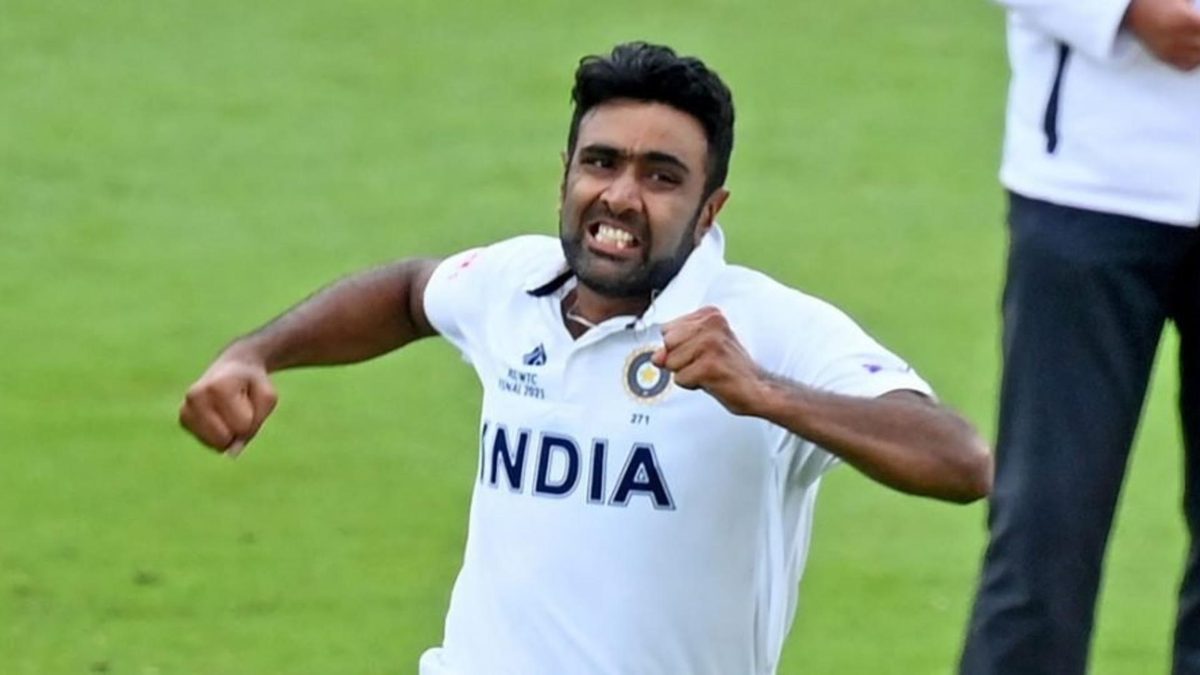
By leaving Ravichandran Ashwin out, India – despite their success on the opening day at Trent Bridge – have passed on a golden chance of dominating a Test series in England from the get-go, and it raises the same old question about their startling selection policies under Virat Kohli, writes Wisden India editor Aadya Sharma.
Sign up to The Cricket Draft, powered by Wisden, an all-new, free-to-play fantasy game running alongside The Hundred, to win prizes and compete with your friends.
Across 14 years and three tours, India have tried to win a Test series in England and fallen considerably short each time. Now, the advantage is theirs, with a historical series win in Australia in their pocket, and a depleted England batting line-up against them. With no Ben Stokes and a top seven as flaky as this, India are likely to come out trumps with just about any combination.
Just months ago, though, England’s batting was tormented by spin in India, and while those were vastly different conditions, it was an advantage India had nonetheless. You were almost prepared to see Ashwin and Ravindra Jadeja in unison before Virat Kohli walked out with the team sheet on day one.
And so, when a bowler with 413 Test wickets was dropped for an extra seamer, it left plenty of heads scratching, and rightly so.
As soon as the decision was out, popular sentiment revolved around the entire ‘Ashwin versus Jadeja’ debate, with many suggesting that Jadeja, as a better all-round package, was rightly picked for the sole spot. However, it was never supposed to be one over the other – one is a match-winning off-spinner who can make the ball talk on almost any surface, and the other is a tidy, accurate spinner who has evolved into a world-class all-rounder. Jadeja’s place isn’t just defined by his spin bowling credentials, it’s heavily determined by his batting. Both have different skill-sets and different roles, and one doesn’t have to be at the expense of the other.
In the past, Jadeja has been preferred over Ashwin because of the latter’s indifferent returns away from home, but Ashwin has recently shown that he’s evolved into a solid all-condition bowler. In Australia, Ashwin consistently weaved magic, and later, in the World Test Championship final, Ashwin’s sixth-day assault on New Zealand’s batsmen in a small chase exemplified his ability to ‘make things happen’. And that’s exactly the sort of impact India will need from their bowlers, especially when you can’t just rely on conducive pitches to help you snare 20 wickets. With no part-timers available, you also can’t bank solely on Jadeja to bear the entire spin load.
India have left Ravichandran Ashwin out of their XI. From seven Tests in England, Ashwin averages 28.11 with the ball. For comparison, Ravindra Jadeja averages 42.52 – though of course, adds much needed balance with the bat. #ENGvIND
— The CricViz Analyst (@cricvizanalyst) August 4, 2021
India’s XI, though, was driven by conditions, stacking up their pace column to utilise Trent Bridge’s seam-friendly track (and the lack of left-handers), but the decision also hinted at the need to extend India’s batting as much as possible. With no Hardik Pandya in the picture, the side has been searching for a seam-bowling all-rounder, and Thakur, with his feisty 67 in Brisbane, had shown signs of being a handy option in that role. The way the middle-order crumbled in Adelaide last year, and during the WTC final, extra padding down the order seemed to be a logical call.
Yet, in terms of batting ability, R Ashwin isn’t too far behind either, and if it was just about adding teeth to the batting, the off-spinner would have done an able job himself. With five Test centuries next to his name, Ashwin has considerable experience on the batting front, and his supporting hand in Hanuma Vihari’s Brisbane masterclass showcased the full range of his abilities as a solid No.8. However, it’s counter-productive to sacrifice your bowling trump card to add cushioning for your misfiring batsmen – if your top seven can’t get you the runs, you can’t bank on your No.8 to consistently rescue you.
Ashwin isn’t the inadequate overseas bowler that he was once. His searing spell of 6-27 on Surrey debut in the County Championship last month would have surely ruffled feathers in the England camp. He looked on top of his game both in skill and adaptability, and it almost looked like India had an early advantage, but that might have been conceded by a confounding selection policy that chose conditions over form and impact.
Under Virat Kohli, India has achieved unprecedented heights, but there’s still work to be done when it comes to winning abroad. And it’s not for the first time in an away series that the muddled selection policy has threatened to mess things up. In 2018, Bhuvneshwar Kumar’s exclusion from the Centurion Test raised eyebrows; later that year, the decision to drop Cheteshwar Pujara from the series opener in England was another bizarre move, and last year, the idea to choose Wriddhiman Saha over Rishabh Pant was quickly proven wrong later in the series.
Hopefully, the call to keep Ashwin out doesn’t do too much damage in the side’s quest for a long-awaited series win in England. For, if things somehow don’t go their way this time, they might have only themselves to blame.








